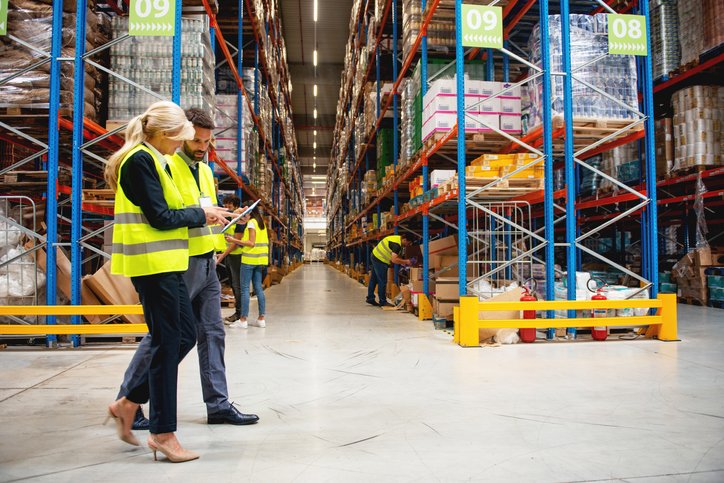Getting out ahead of maintenance starts with being able to make accurate predictions. If you know an asset is likely to run into problems every three weeks, you can schedule inspections and tasks at 18-day intervals. But what if you could make predictions for even further out, right up to when you should be thinking about replacing assets?
That starts with being able to calculate asset useful life.
What is the useful life of an asset?
The life of an asset refers to the length of time your tangible (physical) assets can be expected to contribute to company operations. An important distinction to make is that the useful life of an asset is not the same as how long an asset lasts. Instead, it refers to the period that you can use an asset to help you generate a profit.
All physical assets, such as buildings, vehicles, machinery, and tools, are subject to aging and depreciation. During their useful life, they can generate income for the business, directly or indirectly, as well as provide other benefits. However, many physical assets also have basically an expiry date, which is when their useful life comes to an end, and they no longer benefit the business.
There are many physical and economic factors that can affect the useful life of an asset, such as how you maintain your assets, how often you use them, the development of new technologies, and environmental conditions. As an asset manager, it’s your job to maintain and manage physical assets to prolong their useful life.
But before you can make it longer, you first need to know how to measure it.
How do you determine the useful life of an asset?
Determining the useful life of an asset is not an exact science, as so many different factors can come into play. However, it is important to try to make your estimations as accurate as possible as it can impact your financial, maintenance, and safety planning as well as your assets’ salvageable value.
General guidelines from professional and industry organizations, information about comparable assets, and your own maintenance data can all help you estimate the useful life of an asset.
You should also think about:
- How frequently you use the asset
- Whether the asset was new when you bought it
- If there are new technological advancements that could render it obsolete
- The amount and type of maintenance (reactive vs. preventive) you do on the asset
Typically, most physical assets fall within certain useful life ranges. For example, cars and other vehicles tend to have a useful life of three to six years. Machinery can last between three and 20 years, while property and buildings can be operational for 10 to 50 years.
What is the relationship between the useful life of an asset and depreciation?
As well as giving you an idea of when you need to replace physical assets, useful life can also help you calculate depreciation.
Depreciation is the process of allocating a portion of the cost of an asset over the period you use it. Spreading the initial cost of an asset in this way allows you to distribute its initial cost more fairly across all the periods the asset generates revenue. As an example, if you change the useful life of an asset to four from two years, the depreciation takes twice as long but is half the amount for each accounting period.
How do you calculate depreciation?
There are a few methods you can use to calculate the depreciation of your assets. Most organizations use a method called straight line depreciation, which is the simplest way to calculate the loss of value of an asset over time.
To calculate the straightline depreciation of an asset, just divide the difference between the asset’s upfront cost and its salvageable value by its useful life.
For example, if you buy a piece of machinery for $20,000 that you can sell for $5,000 after a useful life of 10 years, the annual straightline depreciation is:
($20,000 – $5,000) / 10 years = $1,500 annual depreciation.
How can you extend the useful life of an asset?
It’s worth remembering that an asset’s useful life is an estimate and is not set in stone. There are several things you can do to extend the useful life of your assets and save money in the long run.
Set up preventive maintenance
Using proactive strategies like preventive and predictive maintenance can help to keep your assets in the best possible condition and reduce the number of breakdowns. That’s important because recurring breakdowns can reduce an asset’s useful life.
Use quality spare parts
Using original spare parts that are designed specifically for use with your asset can help to prolong its life cycle. You can source these quality parts from the vendor and other authorized dealers.
Invest in techs’ training
Making sure your machine operators and techs know how to inspect and maintain your specialized equipment should ensure it receives the best possible care.
Follow OEM guidelines
Following the guidelines from the original equipment manufacturer, including making suitable adjustments to the workplace where necessary, is another simple step you can take to extend the useful life of your assets.
Buy the right asset in the first place
And of course, carrying out your due diligence during the procurement phase and buying equipment that fits your use case can prevent you from having to replace assets prematurely.
It’s also worth noting that you cannot extend the life of every asset. Certain devices, typically those involved in safety, must be replaced every few years by law. That said, maintenance, training, and following the OEM guidelines might still be necessary to prevent you from having to replace them prematurely.
What are some tangible asset useful life examples?
The IRS has created a list of examples of the useful life of all sorts of tangible assets that you may find helpful.
It puts the useful life of tractors and tractor units at three years, but gives cars, taxis, buses, trucks, computers, and office machines a useful life of five years. Office furniture and other fixtures have a lifespan of seven years, while improvements to land or business property, such as roads, fences, and bridges, can be beneficial for around 15 years.
At the higher end of the scale, farm buildings have a useful life of 20 years, while residential rental properties typically have a lifespan of 27 to 28 years. Non-residential real estate, such as warehouses and factories, has an estimated useful lifespan of 39 years.
How can ManagerPlus EAM software help?
ManagerPlus® EAM software lets you track your critical assets, calculate depreciation, and produce reports to help you keep your assets running better for longer.
ManagerPlus is always connected and lives in the cloud, so you can get all the information you need to keep your assets running efficiently, right at your fingertips. You can gain detailed insights into every aspect of your asset operations, including vendor work and inspections, and discover operational inefficiencies with in-depth looks at how your assets are performing.
You can also use historical data and actual efficiency, broken down by asset type, to make informed decisions about when to replace your assets. And it helps you perform inspections and critical maintenance operations within hours, not days, to keep your assets in the best possible condition.
What’s next?
Want to find out how ManagerPlus EAM can help you extend the useful life of your tangible assets? Book a live demo with one of our experts or get in touch so we can answer your questions.
Executive summary
The life of an asset refers to the length of time your tangible (physical) assets can be expected to contribute to company operations. There are lots of physical and economic factors that can affect the useful life of your assets, such as how you maintain them, how often you use them, the advent of new technology, and the environmental conditions.
Determining the useful life of an asset is not an exact science, as so many different factors can come into play. However, it is important to try to make your estimations as accurate as possible as they can impact your financial, maintenance, and safety planning as well as your assets’ salvageable value.
There are several things you can do, from using quality spare parts to performing preventive maintenance, to help you extend the useful life of your assets. You can also use EAM software like ManagerPlus, which allows you to track your assets, calculate depreciation, and produce reports so you can keep them running better for longer.




